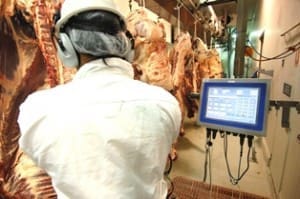IT’S not uncommon, for tax reasons, for slaughter cattle flow to rise a little with the start of the new financial year, and the trend appears to have followed suit again this year – despite the underlying shortage of killable cattle across Eastern Australia.
The National Livestock Reporting Service logged a seven-day Eastern States kill for the week ending Friday of 132,192 head – up an encouraging 5200 head or four percent on the previous week.
 Queensland’s kill rose above 71,000 for the first time in a considerable period – up 10pc on the previous week. NSW also showed a 4pc rise on the previous week to 28,188 head.
Queensland’s kill rose above 71,000 for the first time in a considerable period – up 10pc on the previous week. NSW also showed a 4pc rise on the previous week to 28,188 head.
But don’t get excited. There’s little or nothing to come behind it, evidence from processor livestock buyers suggests.
July is normally one of the easiest months of the year to fill for Queensland/northern NSW beef processors, but this year there’s kill slots available before Friday at virtually any plant you care to name.
Grids this week for kills in southeast Queensland and northern NSW remain virtually unchanged, with the record-setting rates achieved a fortnight ago around 570c/kg for four-tooth grassfed heavy steer and 525c on heavy cows remaining in place.
Despite the money on offer though, processors continue to struggle to raise a kill, of any sort.
Beef Central’s prognostication back nine weeks ago in the weekly kill report of May 17 “Have slaughter numbers already hit their peak for the year?” now looks to be a sure bet.
Given that direct consignment now appears in better alignment with saleyards pricing, after several weeks where saleyards had the upper hand (see earlier kill report), it appears that processors have now rung the bell on pricing, and are now more content to drop further shifts than simply chase cattle, knowing the enormous losses that they face every time they despatch a beast.
Many Queensland and NSW plants struggled to kill four days last week, and while some are optimistic they will fill five days this week, forecast of further rain in the eight-day BOM outlook could again make that a tough objective.
If the forecast proves true, it could play havoc with both saleyards and direct consignment availability later next week.
Stand by for some more important decisions to be made about medium-term slaughter operations by at least two significant processors later this week. Other NSW plants are talking about taking several weeks off to try to avoid the worst of the supply challenge. There’s rumours everywhere, and some of them, at least are likely to be true.
August is now looking horrific for plants desperate trying to maintain some level of throughput, to defend the productivity of their plants.
The Aussie dollar is certainly not helping, remaining stubbornly above US75c this week. Some pundits say it needs to have a ‘6’ in front of it to start to deliver any sort of competitive advantage to Australian beef in export markets – particularly as competitors like Brazil and the US continue to make breakthroughs in export access to important Australian markets like Saudi (US now eligible) last week.
Meat trading desks are well and truly at the threshold of what they can ask for Australian beef in the international marketplace, and are starting to report more knock-backs on prices being asked, Beef Central has been told.
Processors appear to be at the limit of what they can write at the export end, and at the limit of what they can pay at the cattle supply end. Something has to give.
More on that on Friday.



HAVE YOUR SAY